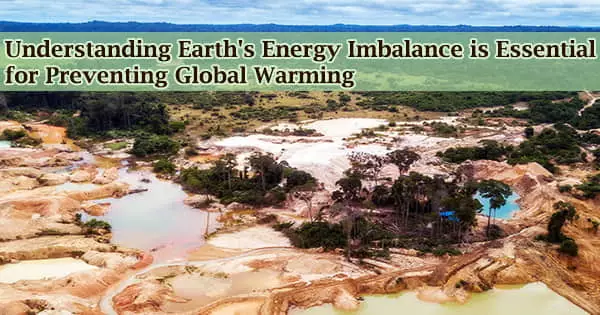According to a new study published today in the inaugural issue of Environmental Research: Climate, a new open-access magazine, the imbalance of energy on Earth is the most crucial indicator of the scope and consequences of climate change.
Kevin Trenberth, a renowned researcher at the National Center for Atmospheric Research (NCAR), and Lijing Cheng, a climate scientist, and co-author, have created a new comprehensive inventory of all the different sources of surplus heat on Earth.
In order to identify the imbalance, he looked at energy changes in the climate system’s components of the atmosphere, ocean, land, and ice from 2000 to 2019. He then compared these changes to radiation at the top of the Earth’s atmosphere.
The phenomenon of rising average air temperatures close to the surface of the Earth over the previous one to two centuries is known as global warming. Since the middle of the 20th century, climate scientists have accumulated extensive data on a variety of weather events, including temperatures, precipitation, and storms, as well as on factors that have an impact on climates, such as ocean currents and the chemical makeup of the atmosphere.
“The net energy imbalance is calculated by looking at how much heat is absorbed from the Sun and how much is able to radiate back into space,” explains Trenberth, whose paper was published today, “it is not yet possible to measure the imbalance directly, the only practical way to estimate it is through an inventory of the changes in energy.”
When carbon dioxide (CO2) and other air pollutants build up in the atmosphere, they absorb sunlight and solar rays that have already reflected off the surface of the earth.
Although the earth’s climate has changed several times over the past 800,000 years due to natural cycles and fluctuations, our current era of global warming is solely attributable to human activity, particularly the burning of fossil fuels like coal, oil, gasoline, and natural gas, which creates the greenhouse effect.
The net energy imbalance is calculated by looking at how much heat is absorbed from the Sun and how much is able to radiate back into space. It is not yet possible to measure the imbalance directly, the only practical way to estimate it is through an inventory of the changes in energy.
Kevin Trenberth
To understand and thus manage the climate catastrophe, it is essential to comprehend the net energy gain of the climate system from all sources, how much extra energy there is, and where it is redistributed in the Earth system.
Prior to now, the increase in the Earth’s global mean surface temperature has been the main focus of climate study. This is only one result of the overall energy imbalance that Earth is currently experiencing.
Excessive energy has an impact on weather patterns, directly increasing the frequency or intensity of extreme weather events including hurricanes, wildfires, droughts, heat waves, and heavy rain and flooding.
The so-called greenhouse effect, which causes the Earth’s surface and lower atmosphere to warm due to the presence of water vapor, carbon dioxide, methane, nitrous oxides, and other greenhouse gases, has grown in intensity, which is the cause of modern global warming.
Weather-related events move energy, aid the climate system in releasing energy by radiating it into space, and have an impact on global warming. According to the study, 93 percent of the excess heat caused by the imbalance is absorbed by the seas, raising their temperature and sea level and making 2021 the hottest year for the oceans on record.
“Modelling the Earth energy imbalance is challenging, and the relevant observations and their synthesis need improvements. Understanding how all forms of energy are distributed across the globe and are sequestered or radiated back to space will give us a better understanding of our future,” adds Lijing Cheng, co-author of the study.
















